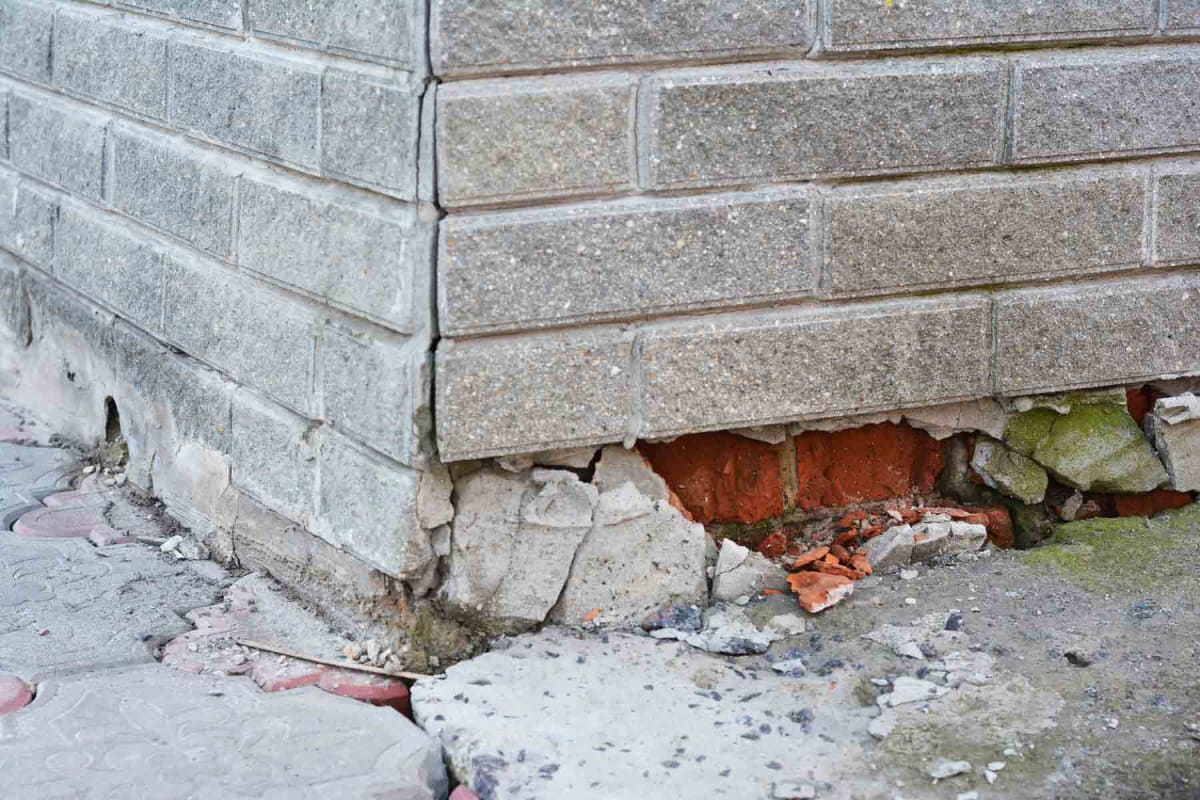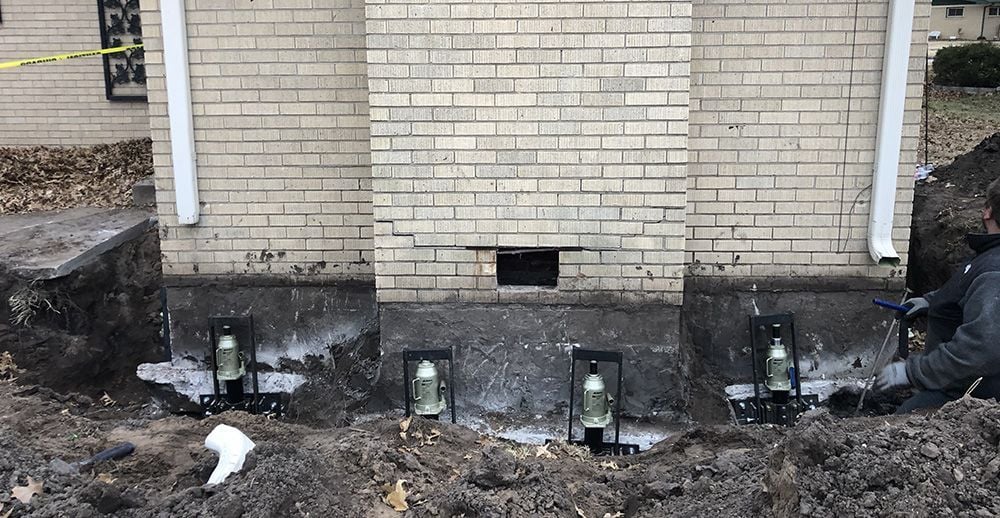Foundation Repair Oklahoma City OK: Tips for Locating the Right Professionals
Wiki Article
Discovering Different Approaches of Foundation Fixing for Various Soil Kinds
Foundation repair is an important element of keeping architectural stability, particularly when taking into consideration the varied difficulties presented by various dirt types. The intricacy of soil behavior under varying problems requires a tailored strategy to repair, guaranteeing optimum options such as helical piers for unpredictable soils or chemical cements for cohesive layers. The inquiry remains: exactly how do we figure out the most effective approach for each distinct circumstance? Recognizing the interplay in between soil characteristics and repair service techniques is critical, yet there is even more to uncover in the mission for lasting services. What variables really determine the choice of approach?Recognizing Soil Types
Soil types play a vital function in the stability and long life of structure structures, making it essential for homeowners and building and construction specialists to recognize their characteristics and behavior. The interaction between soil and structure can determine the structural integrity of a structure. There are several soil types, each with distinctive physical residential properties that influence just how foundations are developed and maintained.Granular soils, such as sand and crushed rock, supply great drainage and are commonly taken into consideration secure. In comparison, cohesive dirts like silts and clays show different actions.
Rocky soils, recognized for their stamina and security, offer outstanding support for foundations yet may require customized equipment for excavation. Conversely, loamy dirts, which are a well balanced blend of clay, silt, and sand, usually offer positive conditions for foundation assistance as a result of their moderate drain buildings.

Understanding these soil kinds is crucial for picking proper structure repair service techniques, guaranteeing the longevity and safety of structures in time.
Difficulties With Expansive Clay
Amongst the numerous dirt kinds, large clay offers unique challenges for structure security as a result of its tendency to undertake substantial quantity changes with moisture variant. This kind of dirt swells when damp and agreements when dry, which can put in considerable stress on frameworks. These changes can lead to foundation breaking, heaving, and negotiation problems, posing substantial dangers to the architectural stability of structures.The challenges with expansive clay are worsened by its plasticity index, which measures the dirt's capability to alter shape and quantity. A high plasticity index indicates greater potential for activity, raising the chance of damages to foundations. This is specifically troublesome in regions experiencing constant or severe weather adjustments, where cycles of damp and dry conditions prevail.
In addition, the deepness of expansive clay layers can differ, complicating the analysis and preparation of proper structure fixing techniques. The unforeseeable nature of its activity requires specialized engineering services to alleviate risks. Furthermore, extensive clay can impact utility driveways, walkways, and lines, better complicating fixing efforts. These complexities need an extensive geotechnical analysis to ensure reliable foundation repair service approaches are implemented, highlighting the value of addressing extensive clay challenges with proficiency and care.
Solutions for Sandy Soils
Sandy soils, defined by their large fragment size and reduced cohesion, existing distinct difficulties for structure stability due to their propensity for changing and disintegration. By securing the foundation to much deeper, more secure soil layers, these systems can provide the required assistance to combat the click resources shifting nature of sandy dirts.Another recommended method is the application of dirt stabilization techniques. Chemical grouting, for example, entails injecting a stabilizing representative into the dirt, which boosts communication and lowers permeability. This procedure aids to solidify the sandy substratum, thus lessening the risk of erosion and movement.
Furthermore, mounting proper drain systems is essential in sandy dirt problems. Making sure adequate drain can protect against water accumulation around the foundation, which usually exacerbates disintegration and dirt variation. Techniques such as French drains or surface grading can be used to direct water away from the check here building boundary.
Resolving Settling in Loamy Soils
Loamy soils, recognized for their balanced mix of sand, silt, and clay, use an abundant base for several frameworks but can often cause structure settling as a result of their special composition. This well balanced appearance supplies exceptional drain and nutrient retention, making it ideal for agriculture and landscaping. However, this same characteristic can become problematic for foundations, as changes in dampness web content can create the dirt to broaden or contract, resulting in settling.Resolving settling in fertile dirts requires a multifaceted technique. Initially, exact soil screening is critical to establish the particular composition and wetness material of the loam. When data is collected, executing correct drain remedies is vital to keep constant dampness levels, therefore minimizing the threat of soil contraction or development. French drains pipes or surface area grading are reliable techniques to redirect water away from the structure.

Cutting-edge Repair Service Techniques
In the realm of structure repair work, cutting-edge methods are continuously being developed to address the facility tests positioned by various dirt conditions. As soil kinds differ dramatically in their architectural residential or commercial properties, traditional approaches may not always are adequate. The development of new modern technologies in foundation repair gives much more customized remedies, ensuring security and longevity.One significant technology is making use of helical piers, which are particularly effective in extensive or unstable soils (foundation repair Oklahoma). These piers are screwed into the ground up until they get to a stable layer of dirt, offering strong support for the foundation over. This approach minimizes disruption and is adaptable to different soil types, making it a functional option
Another cutting-edge technique is the application of polyurethane foam shot. This approach entails injecting high-density polyurethane foam under the foundation to fill up spaces and maintain the structure. It is a less invasive alternative to standard support, using quick installation with minimal disruption to the surrounding location.
Additionally, soil stablizing techniques, such as using chemical grouts, have gotten traction. These compounds improve dirt stamina and reduce permeability, avoiding future moving. Collectively, these innovative fixing strategies provide effective options for the varied obstacles presented by varying dirt problems.
Conclusion

Foundation repair work is a critical aspect of preserving architectural honesty, particularly when thinking about the diverse difficulties posed by different dirt types (foundation repair okc). The complexity of dirt behavior under varying conditions requires a customized strategy to repair, making certain ideal services such as helical piers for unstable soils or chemical grouts for cohesive layers. By securing the structure to much deeper, much more steady soil layers, these systems can offer the needed support to counteract the changing nature of sandy dirts
Structure repair work calls for cautious factor to consider of dirt kinds to ensure stability and durability. Chemical grouts improve soil stamina and minimize leaks in the structure in natural soils.
Report this wiki page